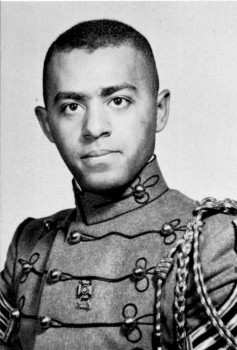In 1954, the U.S. Supreme Court struck down the “separate but equal” doctrine that formed the basis for state-sanctioned discrimination. In the turbulent decade and-a-half that followed the decision of the Supreme Court, civil rights activists used nonviolent protest and civil disobedience to bring about change in country. Many of the protestors risked – and sometimes lost – their lives.
PMC was not insulated from these changes and, in 1956, the first African-American Cadets, Keith Bodden and Charles Lowrie enrolled. A year later, Theof Pendarvis was a talented and quick football player and soon became known as “Bullet Bob.” Unfortunately Pendarvis suffered a serious injury in a car accident and attended PMC for only one year. After he visited the PMC campus and found that the college took a personal interest in him, Keith Bodden ’60, enrolled. Louis Horner, a talented student and Class President at his local high school, spent a year at Peekskill Military Academy, NY, in preparation for an appointment to West Point. However, rather than attending West Point, Horner came to PMC in 1958.
The single common experience these men shared was their feelings of friendship with their classmates. While the country struggled with the issue of segregation, the bond formed at PMC held these men together through many difficult situations. Horner describes such of occasion in his soon-to-be published book:
Along with his class, Louis attended ROTC Summer Camp in 1962 at Fort Meade, MD, before the First Class (Senior) year. “Fourteen of us went to a movie in Baltimore. I was the only African-American and I was told I would have to sit in the balcony. All my friends – over the ticket seller’s objections – bought tickets for the balcony too. You should have seen it – all the blacks looking at the whites,” he said, in his branded soft-spoken manner. We came to PMC as boys and left as men and Brothers


